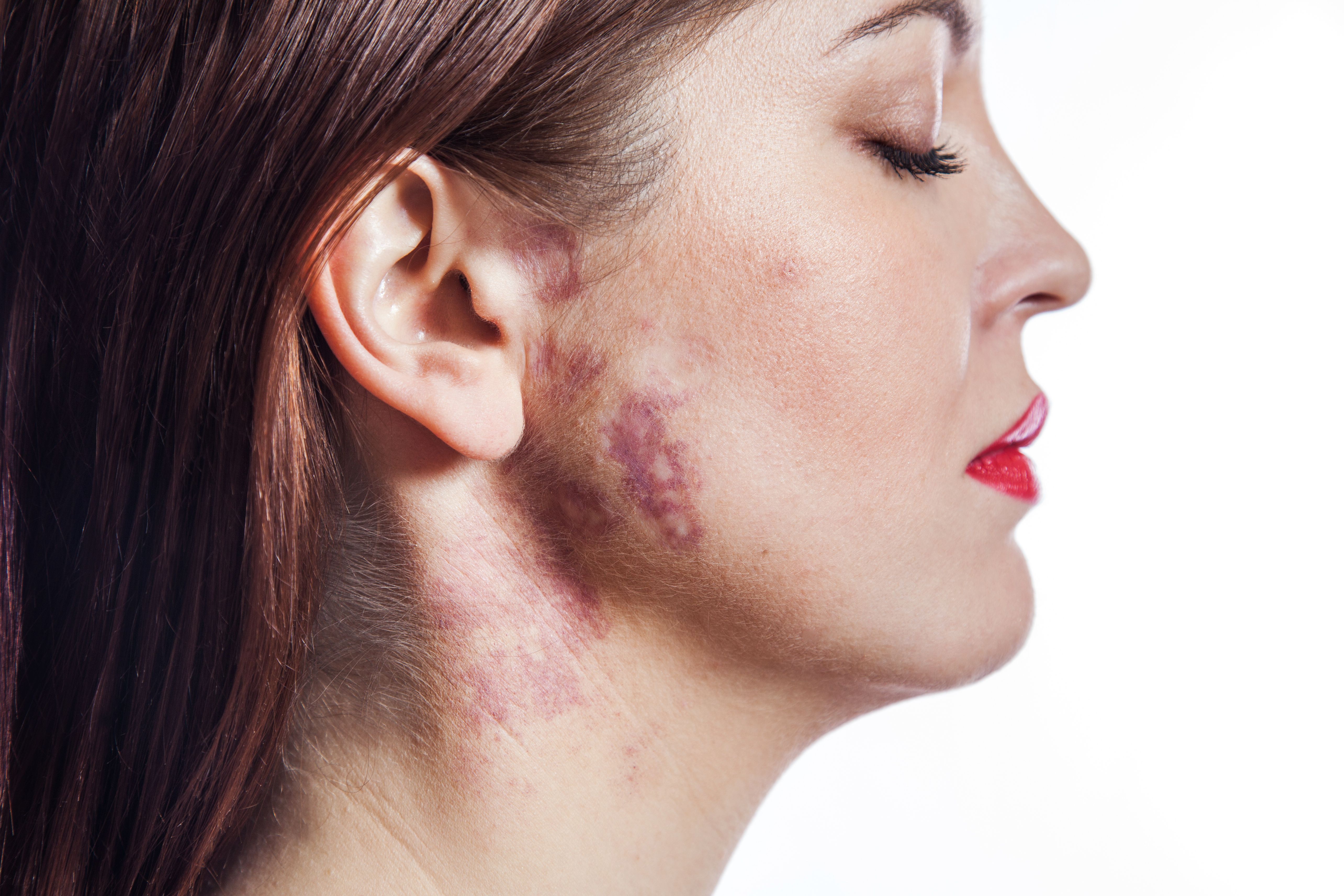- Acne
- Actinic Keratosis
- Aesthetics
- Alopecia
- Atopic Dermatitis
- Buy-and-Bill
- COVID-19
- Case-Based Roundtable
- Chronic Hand Eczema
- Chronic Spontaneous Urticaria
- Drug Watch
- Eczema
- General Dermatology
- Hidradenitis Suppurativa
- Melasma
- NP and PA
- Pediatric Dermatology
- Pigmentary Disorders
- Practice Management
- Precision Medicine and Biologics
- Prurigo Nodularis
- Psoriasis
- Psoriatic Arthritis
- Rare Disease
- Rosacea
- Skin Cancer
- Vitiligo
- Wound Care
Article
Fewer Treatments Necessary for Port Wine Stain Removal With Larger Spot Laser
Author(s):
Researchers also identified 50% improvement in appearance with larger spot laser use.
Compared to other methods, larger spot novel generation pulsed dye laser (NPDL) achieved 50% improvement to the appearance of port wine birthmarks (PWBs). Furthermore, this treatment method required fewer treatment sessions to achieve improvements or clearance than others.
khosrork/AdobeStock

In a retrospective study1 and comparative analysis, researchers sought to compare treatment parameters and outcomes in patients whose PWBs were treated using either the prior generation pulsed dye laser (PPDL) or the larger spot NPDL. They cited the tendency of heterogenous ectatic vessels to remain untreated or improperly treated if not addressed in infancy as well as research supporting the efficacy of NPDLs in treating photoaging, poikiloderma, and rosacea.
Researchers collected data from patients with PWBs between 2011 and November 2021. Participants (n=160) had been treated either with the NPDL (n=80) or PPDL 595-nm (n=80) devices at one of two treatment sites and had to be accompanied by follow-up photographs. These photographs were each assessed by blinded graders; the analyses determined the degree of PWB improvement using a 1 to 5 analog scale—with 1 representing poor improvement and 5 representing complete, 100% improvement.
During inclusion, researchers also collected patient data, including:
- Age
- Dynamic cooling device (DCD) settings
- Laser fluence
- Lesion location/dermatome
- Number of treatments
- Pulse counts
- Pulse widths
- Sex
- Spot size
Researchers sought a primary endpoint of at least 50% improvement in lesion appearance. While analyzing the full sample, researchers determined that the only independent variable with statistical significance was the treatment device.
They found that among participants receiving PPDL treatment, patients required an average of 8.8 treatments to achieve equal to or greater than 50% improvement, while patients receiving NPDL treatment required an average of 4.3 treatment sessions to achieve the same metric.
Additionally, patients being treated with PPDL required an average of 8.2 treatments to achieve equal to or greater than 75% improvement, whereas patients receiving 5.1 treatments required an average of 5.1 treatments.
One study limitation, as noted by researchers, was the limited sample size of participants.
“The large spot NPDL treatment of PWB demonstrated significantly fewer treatments to achieve at least 50% improvement compared to the PPDL although there was no significant difference in overall outcome compared to PPDL with the chosen laser parameters,” study authors wrote. “Future studies would evaluate the differential response to treatment by lesion characteristics and patient demographics. Furthermore, OCT characterization of therapeutic endpoints with large spot treatments would help to define optimal laser parameters. Moreover, there is the distinct possibility that maximizing the larger spot sizes and higher energy fluences with the NPDL will ultimately lead to superior outcomes.”
Reference
- Sodha P, Wang JV, Aboul‐Fettouh N, Martin K, Geronemus RG, Friedman PM. Largest comparative analysis: Novel large spot size 595 nm, high‐energy, pulsed dye laser reduces number of treatments for improvement of adult and pediatric port wine birthmarks. Lasers Surg Med. Published online June 9, 2023. doi:10.1002/lsm.23693
Newsletter
Like what you’re reading? Subscribe to Dermatology Times for weekly updates on therapies, innovations, and real-world practice tips.











